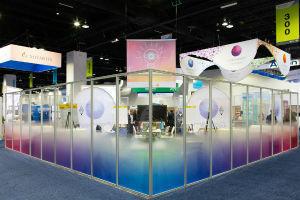Last month, we took a closer look at the first topic that was investigated by our Best Practices honorees in the EYEdea Lab in June: the nature and necessity of the doctor-patient relationship. This month, let’s examine the findings from the second topic: whether eye care practitioners need to offer an ever-growing suite of products, services and amenities in order to differentiate themselves.

In the research from the show floor at Optometry’s Meeting in Denver, the feedback was clear that patients want an overall better exam experience, but not an unrelated one. ECPs pointed to transparency as a top priority, being clear about what’s going to happen, how much it will cost, how long it will take, and why any recommendations are made.
Survey data provided additional perspective, which challenged that amenities contributed to a positive patient experience.
When asked about investments made to reception areas to create a more comfortable and unique patient experience, results were split:
- 58% of eye care professionals reported making investments in this area.
- 42% said they had not made any expenditures along these lines.

But a patient survey leaned toward these investments being of less value to the overall experience:
- 79% of consumers said it was not important for their eye doctor's office to have spa-like amenities (e.g., coffee service, massage chairs, relaxing atmosphere, etc.)
- 60% of eye care professionals reported offering additional products for sale in their practices - including makeup products, skin care products, ad vitamins.
- 76% of consumers said that they would not purchase any of these products at their eye doctor's office.

“The results show that patients really value their eye care professionals and the exam experience over the amenities and ancillary product lines and while eye care professionals were split over whether to offer these extras, it is important to consider how these tie back to the eye exam and ongoing care – because that is what they’re coming for,” said Dr. Shauna Thornhill of Amarillo, Texas.
“What does this look like in a practice setting? We recommend being as efficient as possible so patients aren’t left waiting, versus implementing spa-like amenities to make waiting more tolerable,” said Dr. Roxanna Potter of Sylvania, Ohio. “Employee smart scheduling techniques and invest in systems and training to stay on task and on time. Make the patient feel that every minute in the office was spent purposefully.”

At every turn, Best Practices honorees participating in the EYEdea Lab reported one underlying theme: visiting an eye care professional’s office is not only about the services; it is about how practices develop trust and guide their patient’s decision making.
“In the EYEdea Lab, our Best Practices honorees tested commonly held beliefs about what it takes to compete in today’s marketplace,” said Michele Andrews, OD, Senior Director, Professional and Academic Affairs at CooperVision. “Many eye care professionals don’t often get the chance to step back and evaluate what they are doing and why, and whether their actions or investments are effective. We hope that these insights inspire them to pause and consider how they operate, with an eye toward ongoing success. For our part, we are eager to continue to share stories of success from practitioners across the profession through Best Practices.”








